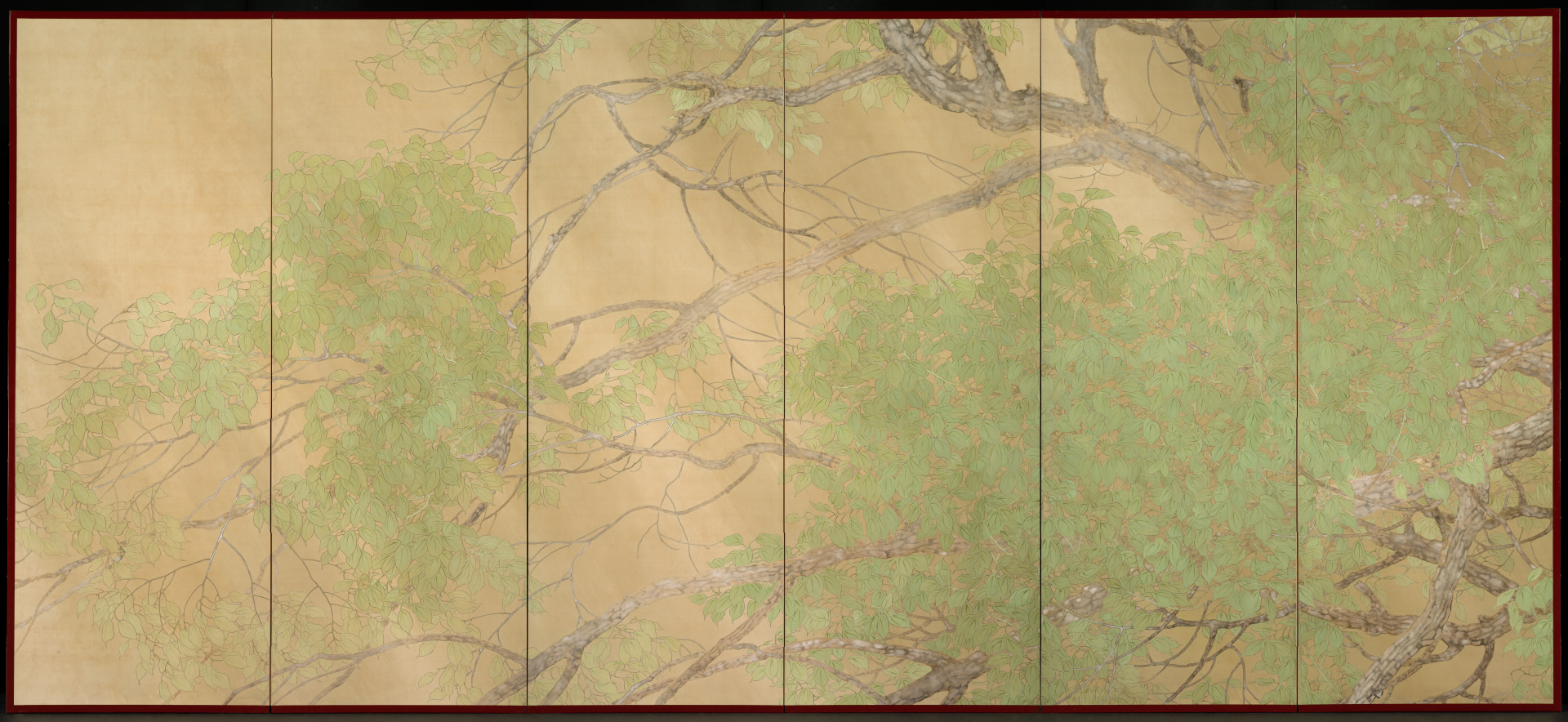
- Magazine Article
- Collection
- Exhibitions
A Measured Modernity
A new installation explores how artists in 19th- and early 20th-century Japan balanced tradition and Western influence

The July rotation in the Japanese art galleries brings together artworks in a variety of media to tell an integrated narrative of the final days of the Tokugawa shoguns in the 1840s–60s through the pre–World War II era. It celebrates the creativity of Japan’s artists during this time of intense societal change, as many strove to maintain traditional production technologies and subject matter while reorienting themselves to a world in which a new awareness of Western sensibilities joined a strong history of venerating Chinese culture. The rotation provides a cultural counterpoint to the works from the 13th through early 17th centuries in the exhibition Reeds and Geese: Japanese Art from the Collection of George Gund III, on view through September 3.

Debuting in the galleries is White Herons in Rain. This pair of screens, acquired in 2015, is an example of modern Japanese painting, or Nihonga, which draws on the style established by Maruyama Okyo (1733–1795). Nihonga developed during the Meiji period (1868–1912) in response to information about European painting and culture that inundated artists in Japan in the late 19th and early 20th centuries. The goal was to reinterpret traditional Japanese styles and formats in order to correct for a perceived lack of relevance to modern sensibilities. In this composition, Kyoto-based artist Fujii Setsuden takes the naturalism of the Maruyama-Shijo school of painting and applies it to his explorations of light and atmosphere in a color palette that borrows from Western Impressionism and Post-Impressionism. Setsuden received a medal at the sixth Japanese Ministry of Education Exhibition in 1912 for another folding screen featuring the theme of birds in rain. His work also earned favorable reviews in Italy during his lifetime.
Works from the permanent collection will be joined by a special selection of Meiji period (1868–1912) and Taisho period (1912–1926) porcelains on loan to the museum from the James and Christine Heusinger Collection. Featured are works by the Kyoto-based artist Seifu Yohei III (1851–1914) and the Kanto transplant Miyagawa Kozan I (1842–1916), who were the first and second ceramicists, respectively, to be appointed as Imperial Household Artists under a system introduced by the Meiji government in 1890.

On view July 15, 2017–January 8, 2018, Kelvin and Eleanor Smith Foundation Japanese Art Galleries (235a–b)